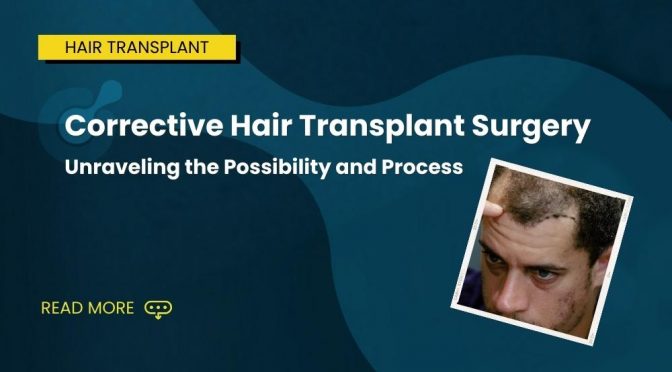-
Languages ENGLISH
-
Call 24/7 +39 030 764 1043
-
Open Hours Mon - Sat: 9am to 6pm

Hair transplant surgery has emerged as a significant solution for those battling baldness or thinning hair. However, not all procedures yield the desired results. Missteps in surgical decisions, poor aesthetic judgments, or performing procedures on unsuitable candidates can lead to unsatisfactory outcomes. This article explores the possibility and process of corrective hair transplant surgery, a procedure aimed at rectifying previous botched hair transplant surgeries.
Hair transplant surgery is a hair restoration procedure that involves moving existing hair to areas with thinning or no hair. Direct Hair Transplant (DHI) and Follicular Unit Extraction (FUE) are two primary methods utilised. The DHI method involves removing carefully healthy grafts from a healthy donor area and implanting them in the recipient area which can be the front or the crown. The FUE method involves harvesting individual follicular units directly from the scalp. These harvested units are then transplanted to the balding areas of the scalp.
While hair transplant surgery can offer promising results, it is not devoid of potential risks. These risks are heightened when the procedure is performed by inexperienced practitioners or in clinics not governed by a professional medical body.
Common issues arising from subpar hair transplant surgeries include unnatural-looking hairlines, damage to the donor area, over-harvested donor area, and hair follicles that grow in the wrong direction. These issues often lead to dissatisfaction and regret among patients.
The question then arises, “Can a botched hair transplant surgery be corrected?” The answer is a resounding “Yes.” It’s important to note that the correction process is not a reversal of the initial surgery but a careful revision and improvement of the unsatisfactory result.
Corrective hair transplant surgery is a specialized procedure that requires the expertise of highly skilled surgeons. Although the process may be complex and demanding, it offers hope for those who have had unfavourable experiences with previous hair transplant surgeries.
There are several reasons why an individual might seek corrective hair transplant surgery. They include:
The first step in corrective hair transplant surgery is to identify the issues with the initial procedure. In some cases, problems such as larger plugs or poorly positioned grafts can be addressed by covering them with better grafts, a process known as “de-emphasis grafting.”
Sometimes grafts may be poorly or unnaturally positioned in an area like the forehead where there should only be a naked scalp. In such cases, the grafts can be removed or relocated to a different area on the scalp.
Several factors are critical in performing a successful corrective hair transplant surgery. These include:
The experience and skill of the surgeon play a critical role in the success of corrective hair transplant surgery. A skilled surgeon will assess the patient’s situation, identify the issues with the initial procedure, and devise a comprehensive treatment plan tailored to the patient’s needs.
If you’re dissatisfied with the outcome of a previous hair transplant surgery, you do not have to live with an inferior job. Clinics like the BlueMagic Group offer expert corrective hair transplant surgery services. Contact them today to schedule a free hair transplant consultation, evaluate your concerns, and discuss the best options for your unique case. Together, you can develop a treatment plan that can set you on the course to regain confidence in your hair.
Corrective hair transplant surgery is indeed possible. It can greatly improve the results of a previously unsuccessful hair transplant. While the procedure requires great skill and precision, it offers hope for those unsatisfied with their initial hair transplant surgery. Remember, it’s crucial to choose a reputable clinic and highly skilled surgeons. BlueMagic Group Clinic ensures the best possible outcome for your corrective hair transplant surgery.
4000 Grafts Hair Transplant: Comprehensive Guide on Costs and Coverage
Curious to know how your hair transplant would go? Connect with us today and let us help you understand each and everything with the help of the experts. & let us give you complete details with the help of a free consultation.
 Get free consultation
Get free consultation
Kindly fill up this form and we will get back to you at the earliest.